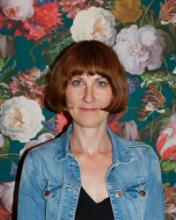Jasmin Krakenberg, Moving Portraits: Christian Petzold and The Art of Portraiture, Christian Petzold: A Dossier, Senses of Cinema, Issue 84: http://sensesofcinema.com/2017/christian-petzold-a-dossier/christian-petzold-and-the-art-of-portraiture/
While most filmmakers use movement as their primary currency, Christian Petzold seems to favor stasis. In Petzold scholarship, movement has received a fair amount of attention. One undertheorized aspect is this fascination with stasis. In specific instances, the camera frees the image from eventhood, affecting what Martin Lefebvre refers to as a “spectacular mode of viewing.” In these moments, the shots captured by the static camera adopt qualities consonant with the static arts, painting, and photography. Although Lefebvre focuses on landscape and setting, his argument can be stretched to include portraiture. The camera shows how things are and it raises awareness of what the images do, rather than what they are and what they mean as a chain of cause and effect. It encourages the viewer to recognize and at the same time investigate the historically constructed relations with images as signifiers, and connotes complex associations. This brings Petzold’s filmic projects close to what Paul Arthur calls filmic portrait practices associated with the American avant-garde of the 1960s and 1970s. The aim of this essay is then to show connections with the visual arts by focusing on filmic strategies that previous scholarship excluded and that operate outside of narrative theory to present a means of re-enchanting cinema.
